- Home
- Jean M. Auel
The Clan of the Cave Bear
The Clan of the Cave Bear Read online
PRAISE FOR THE BESTSELLING CLASSIC
The Clan of the Cave Bear
“The author of this tale of prehistory, Jean Auel, has performed a minor miracle in bringing to life the story of a lost girl adopted into a tribe of hunter-gatherers.… It is thoughtful, sensitive, and intelligently made.”
—San Francisco Chronicle Examiner
“These are real people in every sense, mirroring both our virtues and flaws in heightened color.”
—Newsday
“A page-turner … Jean Auel has used a remarkable setting … the conflict between past and future, the clash between the dying race and the new race that wonders and invents things.… Amazingly, Ms. Auel not only makes us see, feel, and smell what life was like then, but actually creates dimensional characters we can understand and sympathize with.… She has a thorough understanding of human nature, a gift for storytelling.”
—Kansas City Star
“Our nomination for the year’s great escape.”
—Playboy
“A double achievement, doubly remarkable. Jean M. Auel gives us a powerful impression of a world alien in its ways of being and, at the same time, conveys that shock of recognition: these people are ourselves, they are what we were.”
—Lloyd Alexander
“A good old-fashioned tale with a spunky Stone Age tomboy named Ayla.”
—New West
THE CLAN OF THE CAVE BEAR
Ayla—Alone in a world of strangers, she is tall, blond, slender, and smarter than the rest. She must use her wit to survive when she breaks the Clan’s most forbidden taboo.
Brun—Chinless, bearded, bow-legged and barrel-chested, he is the leader of the Clan and must decide the fate of the foreign girl.
Iza—Chief medicine woman of the Clan, Iza sees the strange ugly girl and realizes that she is human and must be saved from starvation.
Creb—The Clan’s Mog-ur, or magician, he is the most revered holy man of all the clans. But his position doesn’t stop him from learning what Ayla knows.
Broud—The son of Brun, he is brutal, proud, and resentful of the attention paid to the strange girl. He vows to get revenge on her in the most physically satisfying way he can.
Durc—Born of a violent rape, belonging to neither one nor the other, he is the future of the Clan.
This eBook version of THE CLAN OF THE CAVE BEAR contains bonus content not found in the printed version.
A Sneak Preview from THE LAND OF PAINTED CAVES
Read an exciting preview from Jean M. Auel’s The Land of Painted Caves, on sale in hardcover in Spring 2011.
EARTH’S CHILDREN® Series Sampler
Read excerpts from each of the novels in the Earth’s Children® series.
Q&A with Jean M. Auel
In this special Q&A, Jean M. Auel discusses her bestselling Earth’s Children® series.
This edition contains the complete text
of the original hardcover edition.
NOT ONE WORD HAS BEEN OMITTED.
THE CLAN OF THE CAVE BEAR
A Bantam Book / published by arrangement with
Crown Publishers
PUBLISHING HISTORY
Crown edition published September 1980
A Literary Guild Featured Alternate Selection / October 1980
A Main Selection of Preferred Choice Bookplan / January 1981
Bantam edition / August 1981
Bantam reissue / November 1991
Bantam reissue / March 2002
EARTH’S CHILDREN is a trademark of Jean M. Auel
All rights reserved.
Copyright © 1980 by Jean M. Auel
Cover art copyright © 1989 by Hiroko
Excerpt from The Land of Painted Caves copyright 2010 by Jean M. Auel.
Library of Congress Catalog Card Number: 80-014581.
No part of this book may be reproduced or transmitted in any form or by any means, electronic or mechanical, including photocopying, recording, or by any information storage and retrieval system, without permission in writing from the publisher.
For information address: Crown Publishers, Inc.,
New York, NY.
eISBN: 978-0-307-76761-5
This book contains an excerpt from the forthcoming book The Land of Painted Caves. This excerpt has been set for this edition only and may not reflect the final content of the forthcoming edition.
Bantam Books are published by Bantam Books, a division of Random House, Inc. Its trademark, consisting of the words “Bantam Books” and the portrayal of a rooster, is Registered in U.S. Patent and Trademark Office and in other countries. Marca Registrada. Bantam Books, 1540 Broadway, New York, New York 10036.
v3.1_r1
for RAY
My worst critic
—and best friend
Contents
Cover
Title Page
Copyright
Dedication
Novels by Jean M. Auel
Map
Acknowledgments
Chapter 1
Chapter 2
Chapter 3
Chapter 4
Chapter 5
Chapter 6
Chapter 7
Chapter 8
Chapter 9
Chapter 10
Chapter 11
Chapter 12
Chapter 13
Chapter 14
Chapter 15
Chapter 16
Chapter 17
Chapter 18
Chapter 19
Chapter 20
Chapter 21
Chapter 22
Chapter 23
Chapter 24
Chapter 25
Chapter 26
Chapter 27
Chapter 28
Excerpt from The Land of Painted Caves
Earth’s Children Series Sampler
An Interview with Jean M. Auel
About the Author
Novels by Jean M. Auel
THE CLAN OF THE CAVE BEAR
THE VALLEY OF HORSES
THE MAMMOTH HUNTERS
THE PLAINS OF PASSAGE
THE SHELTERS OF STONE
And the latest novel in the Earth’s Children® series
THE LAND OF PAINTED CAVES
Acknowledgments
No book published is ever solely the work of the author. Assistance comes from a variety of sources in as many different ways. But some contributions to my work came from people I have never met and probably never will. I am grateful, nonetheless, to the citizens of the city of Portland, and the country of Multnomah, Oregon, whose taxes support the Multnomah County Library, without whose reference materials this book would not have been written. I am also grateful to the archaeologists, anthropologists, and other specialists who wrote the books from which I gathered most of the information for the setting and background of this novel.
There were many who helped more directly. Among them, I want especially to thank:
Gin DeCamp, the first to hear my story idea, who was a friend when I needed one, who read a fat manuscript with enthusiasm and a meticulous eye for errors, and who sculpted a symbol for the series. John DeCamp, friend and fellow writer, who knew the agonies and the ecstasies, and had the uncanny knack of calling exactly when I had to talk to someone who did. Karen Auel, who encouraged her mother more than she ever knew because she laughed where she was supposed to laugh and cried where she was supposed to cry, though it was a first draft.
Cathy Humble, of whom I asked the greatest favor one can ask of a friend—honest criticism—because I valued her sense of words. She did the impossible; her critique was both acutely perceptive and gentle. Deanna Sterett, for getting caught up in the story, and who knew enough a
bout hunting to point out some oversights. Lana Elmer, who listened with unflagging attention to hours of dissertation and still liked the story. Anna Bacus, who offered her unique insights and her sharp eye for spelling.
Not all my research was done in libraries. My husband and I made many field trips to learn firsthand various aspects of living close to nature. In the line of direct experience, special thanks are due to Frank Heyl, Arctic Survival Expert with the Oregon Museum of Science and Industry, who showed me how to make my bed in a snow cave and then expected me to lie in it! I survived that cold January night on the slopes of Mount Hood and learned much more about survival from Mr. Heyl, who has my vote as the one I’d most like to be around during the next Ice Age.
I am indebted to Andy Van’t Hul for sharing with me his special knowledge of living in the natural environment. He showed me firemaking without matches, axes made of stone, cord twining and basket weaving, sinew and rawhide, and how to knap my own stone blade that cuts through leather as though it were butter.
Gratitude beyond measure goes to Jean Naggar, a literary agent so good she turned my wildest fantasy into reality and then bettered it. And to Carole Baron, my shrewd, sharp, and sensitive editor, who believed in the reality, then took my very best effort and made it better.
Finally, there are two individuals who had no idea they were helping me, yet whose assistance was invaluable. I have since met one of them, but the first time I heard writer and teacher Don James talk about the writing of fiction, he didn’t know he was talking directly to me. He thought he was addressing a whole group. The words he said were exactly those I needed to hear. Don James didn’t know it, but I might never have finished this book if it wasn’t for him.
The other is a man I know only through his book, Ralph S. Solecki, author of Shanidar (Alfred A. Knopf, New York). The story of his excavation of Shanidar Cave and discovery of several Neanderthal skeletons profoundly moved me. He gave me a perspective of prehistoric cave man I might not otherwise have had and a better understanding of the meaning of humanity. But I must do more than thank Professor Solecki—I must apologize for one instance of literary license I took with his facts for the sake of my fiction. In real life, it was a Neanderthal who put flowers in the grave.
1
The naked child ran out of the hide-covered lean-to toward the rocky beach at the bend in the small river. It didn’t occur to her to look back. Nothing in her experience ever gave her reason to doubt the shelter and those within it would be there when she returned.
She splashed into the river and felt rocks and sand shift under her feet as the shore fell off sharply. She dived into the cold water and came up sputtering, then reached out with sure strokes for the steep opposite bank. She had learned to swim before she learned to walk and, at five, was at ease in the water. Swimming was often the only way a river could be crossed.
The girl played for a while, swimming back and forth, then let the current float her downstream. Where the river widened and bubbled over rocks, she stood up and waded to shore, then walked back to the beach and began sorting pebbles. She had just put a stone on top of a pile of especially pretty ones when the earth began to tremble.
The child looked with surprise as the stone rolled down of its own accord, and stared in wonder at the small pyramid of pebbles shaking and leveling themselves. Only then did she become aware she was shaking too, but she was still more confused than apprehensive. She glanced around, trying to understand why her universe had altered in some inexplicable way. The earth was not supposed to move.
The small river, which moments before had flowed smoothly, was roiling with choppy waves that splashed over its banks as the rocking streambed moved at cross purposes to the current, dredging mud up from the bottom. Brush close by the upstream banks quivered, animated by unseen movement at the roots, and downstream, boulders bobbed in unaccustomed agitation. Beyond them, stately conifers of the forest into which the stream flowed lurched grotesquely. A giant pine near the bank, its roots exposed and their hold weakened by the spring runoff, leaned toward the opposite shore. With a crack, it gave way and crashed to the ground, bridging the turbid watercourse, and lay shaking on the unsteady earth.
The girl started at the sound of the falling tree. Her stomach churned and tightened into a knot as fear brushed the edge of her mind. She tried to stand but fell back, unbalanced by the sickening swaying. She tried again, managed to pull herself up, and stood unsteadily, afraid to take a step.
As she started toward the hide-covered shelter set back from the stream, she felt a low rumble rise to a terrifying roar. A sour stench of wetness and rot issued from a crack opening in the ground, like the reek of morning breath from a yawning earth. She stared uncomprehendingly at dirt and rocks and small trees falling into the widening gap as the cooled shell of the molten planet cracked in the convulsion.
The lean-to, perched on the far edge of the abyss, tilted, as half the solid ground beneath it pulled away. The slender ridgepole teetered undecidedly, then collapsed and disappeared into the deep hole, taking its hide cover and all it contained with it. The girl trembled in wide-eyed horror as the foul-breathed gaping maw swallowed everything that had given meaning and security to the five short years of her life.
“Mother! Motherrr!” she cried as comprehension overwhelmed her. She didn’t know if the scream ringing in her ears was her own in the thunderous roar of rending rock. She clambered toward the deep crack, but the earth rose up and threw her down. She clawed at the ground, trying to find a secure hold on the heaving, shifting land.
Then the gap closed, the roar ceased, and the shaking earth stilled, but not the child. Lying face down on the soft damp soil churned loose by the paroxysm that convulsed the land, she shook with fear. She had reason to fear.
The child was alone in a wilderness of grassy steppes and scattered forests. Glaciers spanned the continent on the north, pushing their cold before them. Untold numbers of grazing animals, and the carnivores that preyed on them, roamed the vast prairies, but people were few. She had nowhere to go and she had no one who would come and look for her. She was alone.
The ground quivered again, settling itself, and the girl heard a rumbling from the depths, as though the earth were digesting a meal gulped in a single bite. She jumped up in panic, terrified that it would split again. She looked at the place where the lean-to had been. Raw earth and uprooted shrubs were all that remained. Bursting into tears, she ran back to the stream and crumpled into a sobbing heap near the muddy water.
But the damp banks of the stream offered no refuge from the restless planet. Another aftershock, this time more severe, shuddered the ground. She gasped with surprise at the splash of cold water on her naked body. Panic returned; she sprang to her feet. She had to get away from this terrifying place of shaking, devouring earth, but where could she go?
There was no place for seeds to sprout on the rocky beach and it was clear of brush, but the upstream banks were choked with shrubs just sending forth new leaves. Some deep instinct told her to stay near water, but the tangled brambles looked impenetrable. Through wet eyes that blurred her vision, she looked the other way at the forest of tall conifers.
Thin beams of sunlight filtered through the overlapping branches of dense evergreens crowding close to the stream. The shaded forest was nearly devoid of undergrowth, but many of the trees were no longer upright. A few had fallen to the ground; more leaned at awkward angles, supported by neighbors still firmly anchored. Beyond the jumble of trees, the boreal forest was dark and no more inviting than the brush upstream. She didn’t know which way to go, and glanced first one way, then the other with indecision.
A tremble beneath her feet while she was looking downstream set her in motion. Casting one last yearning look at the vacant landscape, childishly hopeful that somehow the lean-to would still be there, she ran into the woods.
Urged on by occasional grumbling as the earth settled, the child followed the flowing water, stopping only to drink
in her hurry to get far away. Conifers that had succumbed to the quaking earth lay prostrate on the ground and she skirted craters left by the circular tangle of shallow roots—moist soil and rocks still clinging to their exposed undersides.
She saw less evidence of disturbance toward evening, fewer uprooted trees and dislodged boulders, and the water cleared. She stopped when she could no longer see her way and sank down on the forest floor, exhausted. Exercise had kept her warm while she was moving, but she shivered in the chill night air, burrowed into the thick carpet of fallen needles and curled up in a tight little ball, throwing handfuls over herself for a cover.
But as tired as she was, sleep did not come easily to the frightened little girl. While busy making her way around obstacles near the stream, she was able to push her fear to the back of her mind. Now, it overwhelmed her. She lay perfectly still, eyes wide open, watching the darkness thicken and congeal around her. She was afraid to move, almost afraid to breathe.
She had never been alone at night before, and there had always been a fire to hold the black unknown at bay. Finally, she could hold back no longer. With a convulsive sob, she cried out her anguish. Her small body shook with sobs and hiccups, and with the release she eased into sleep. A small nocturnal animal nosed her in gentle curiosity, but she wasn’t aware of it.
She woke up screaming!
The planet was still restless, and distant rumbling from deep within brought back her terror in a horrifying nightmare. She jerked up, wanted to run, but her eyes could see no more wide-open than they could behind closed lids. She couldn’t remember where she was at first. Her heart pounded; why couldn’t she see? Where were the loving arms that had always been there to comfort her when she woke in the night? Slowly the conscious realization of her plight seeped back into her mind and, shivering with fear and cold, she huddled down and burrowed into the needle-carpeted ground again. The first faint streaks of dawn found her asleep.

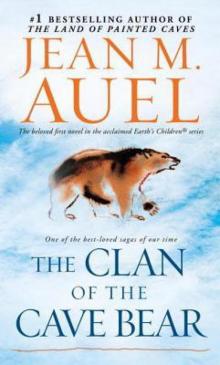 The Clan of the Cave Bear
The Clan of the Cave Bear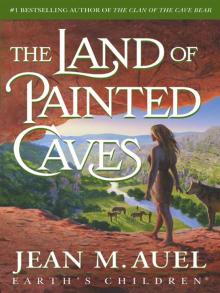 The Land of Painted Caves
The Land of Painted Caves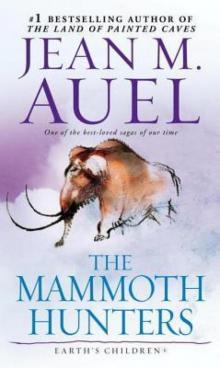 The Mammoth Hunters
The Mammoth Hunters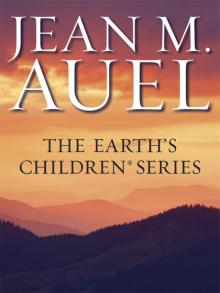 The Earth's Children Series 6-Book Bundle
The Earth's Children Series 6-Book Bundle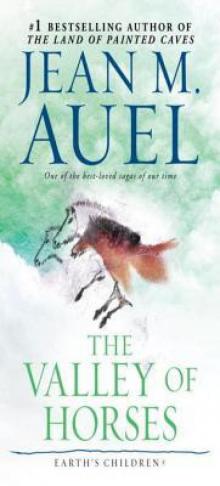 The Valley of Horses
The Valley of Horses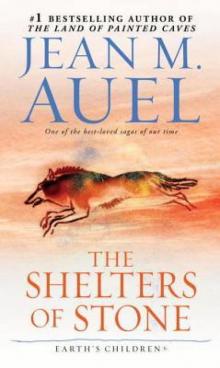 The Shelters of Stone
The Shelters of Stone The Clan of the Cave Bear ec-1
The Clan of the Cave Bear ec-1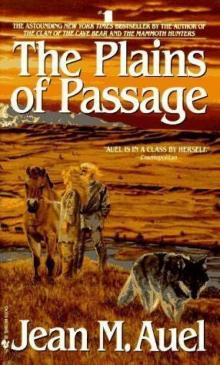 THE PLAINS OF PASSAGE ec-4
THE PLAINS OF PASSAGE ec-4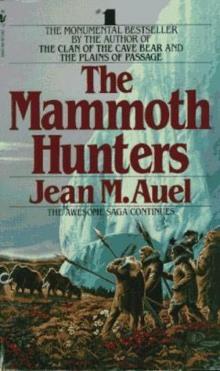 The Mammoth Hunters ec-3
The Mammoth Hunters ec-3 THE SHELTERS OF STONE ec-5
THE SHELTERS OF STONE ec-5 Les refuges de pierre
Les refuges de pierre![Earth's Children [02] The Valley of Horses Read online](http://i1.bookreadfree.com/i1/03/30/earths_children_02_the_valley_of_horses_preview.jpg) Earth's Children [02] The Valley of Horses
Earth's Children [02] The Valley of Horses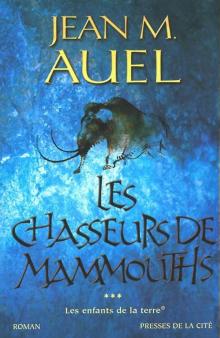 Les chasseurs de mammouths
Les chasseurs de mammouths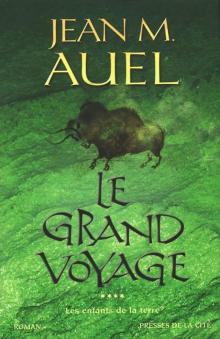 LE GRAND VOYAGE
LE GRAND VOYAGE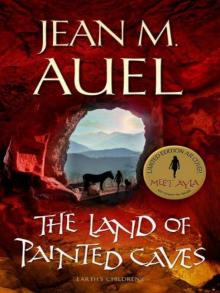 The Land of Painted Caves ec-6
The Land of Painted Caves ec-6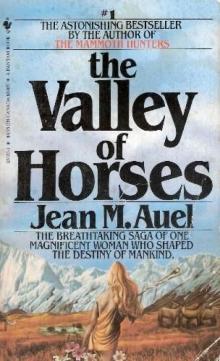 The Valley Of Horses ec-2
The Valley Of Horses ec-2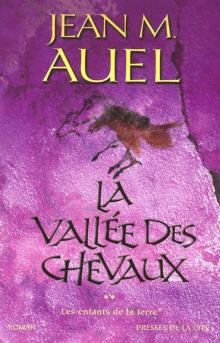 La Vallée des chevaux
La Vallée des chevaux